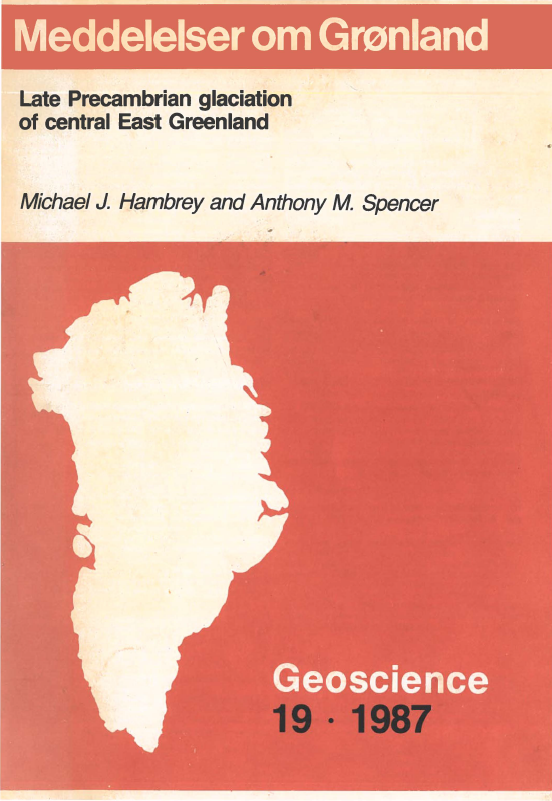Late Precambrian glaciation of central East Greenland
DOI:
https://doi.org/10.7146/moggeosci.v19i.138868Abstract
The Vendian succession of the central East Greenland fjord region is among the best preserved and most extensively exposed in the world and is represented approximately by the Tillite Group, comprising five formations, which from bottom to top are: the Ulvesø Formation (formerly Lower Tillite, dominantly diamictite), the Arena Formation (formerly Inter-Tillite beds, dominantly sandstone and shale), the Storeelv Formation (formerly Upper Tillite, dominantly diamictite, sandstone and conglomerate), the Canyon Formation (dominantly shale and dolostone) and the Spiral Creek Formation (dominantly sandstone, shale and dolostone). The group is underlain by Bed group 20 (limestone) and Bed group 19 (dominantly carbonate, shale and breccia) in different places and in the peripheral areas by older Bed groups of the Eleonore Bay Group. Above, the transgressive Cambrian sandstones of the Kløftelv Formation cap the Vendian sequence, though the exact level of the Precarmbrian-Cambrian boundary may be slightly lower.
This paper reviews previous work on the succession and presents numerous new stratigraphic sections and an assessment of the sedimentary structures. The stratigraphic and palaeoenvironmental significance of the succession can therefore be assessed.
Both main diamictite horizons contain other facies, which together with sedimentary structural and fabric data indicate that the following sediments have been produced: lodgement tillites, waterlain tillites, proximal and distal glaciomarine sediments (with ice-rafted dropstones), glaciolacustrine sediments, fluvioglacial deposits, subaqueous and sub-aerial mass-flows and periglacial phenomena. The other sediments of the Tillite Group were deposited in a dominantly shallow marine or lacustrine environment. Deeper water turbidites are recorded in part of the Arena Formation, whilst the upper part of the group indicates periodic emergence. Stromatolites, desiccation cracks and halite pseudomorphs are particularly distinctive in this part of the succession. A hiatus preceded deposition of the Kløftelv Formation, a transgressive unit of tidally-influenced sandstones.
Stratigraphic thicknesses vary considerably, and whereas individual formations can be recognised throughout most of the fjord region, intraformational horizons cannot normally be traced for more than several kilometres. The nature of the bottom contact of the Tillite Group remains enigmatic, and transitional sedimentary, unconformable and thrust contacts are all present. It is possible that Bed Group 20 may be the lateral equivalent of the Ulves0 Formation, or of Bed Group 19. Although local palaeogeography was complex during deposition of the diamictites, these rocks indicate that a low-level ice sheet prevailed at the time. Together with Svalbard and western Scotland they represent the periphery of an ice-sheet which stretched across much of northern Europe to the Urals. However, much of Vendian time was not characterised by glacial conditions, and warm climates prevailed when the upper part of the Tillite Group was deposited.

Downloads
Published
How to Cite
Issue
Section
License
Coypyright by the authors and the Commision for Scientific Research in Greenland / Danish Polar Center. No parts of the publications may be reproduced in any form without the written permission by the copyright owners.

